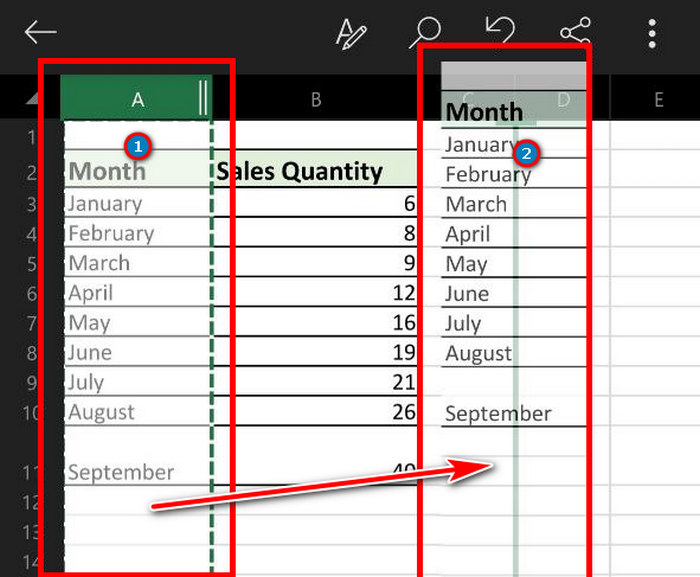5 Steps for ANOVA Test in Excel

An ANOVA (Analysis of Variance) test is a statistical tool used to analyze the differences among group means in a sample. It is particularly useful when comparing more than two groups. For individuals involved in various fields such as psychology, education, marketing, or any discipline requiring statistical analysis, understanding how to perform ANOVA in Excel is crucial. Here, we will guide you through 5 steps for conducting an ANOVA test in Excel, making complex statistical analysis accessible even if you're not a statistician.
Step 1: Preparing Your Data in Excel
The foundation of any statistical analysis, including ANOVA, lies in well-organized data.
- Enter Data: Organize your data into columns where each column represents a different group or treatment, and each row represents an individual’s data point.
- Label Columns: Clearly label each column with its respective group name for clarity.
- Check for Data Quality: Ensure there are no missing or erroneous data points.
🔍 Note: Before proceeding with ANOVA, ensure your data meets the assumptions of normality, homogeneity of variances, and independence within groups.
Step 2: Accessing the Data Analysis Toolpak
To perform ANOVA, Excel’s Data Analysis Toolpak must be enabled.
- Open Excel and go to File > Options > Add-ins.
- At the bottom of the window, select Excel Add-ins from the Manage dropdown, then click Go.
- Check Analysis Toolpak, then click OK. If not already installed, you might need to install it from the Office setup.
Step 3: Conducting the One-Way ANOVA
With the data prepared and the Toolpak enabled, we can proceed to run the ANOVA test:
- Click on Data > Data Analysis.
- Select Anova: Single Factor from the list of available tools and click OK.
- In the dialog box:
- Set Input Range to include all your data, including labels.
- Choose how you want the output - select New Worksheet Ply for a clean view.
- Tick Labels if your data includes column headers.
- Select Alpha for the significance level, usually 0.05.
- Click OK.

| Variable | Setting |
|---|---|
| Input Range | Includes all groups’ data, starting with labels |
| Output Options | New Worksheet Ply |
| Labels | Checked |
| Alpha | 0.05 |
Step 4: Interpreting Your Results
Excel will display the ANOVA results:
- F Value and P-Value: These are key indicators. If P-value is less than your chosen alpha (usually 0.05), reject the null hypothesis - at least one group mean differs significantly from the others.
- Summarize Key Metrics: Look at Between Groups, Within Groups, and Total SS, df, MS, F, and P values for a complete understanding.
🔍 Note: Post-hoc tests like Tukey's HSD might be necessary to determine which specific groups differ when ANOVA indicates a significant result.
Step 5: Follow-Up Analysis
Depending on your results, you might:
- Perform Post-hoc Tests to investigate which group means are significantly different.
- Conduct Multiple Comparisons to adjust for Type I errors.
- Consider Effect Size to gauge the practical significance of your results.
By following these steps, you'll have successfully conducted an ANOVA test in Excel. Remember, ANOVA is a tool to see if differences among groups are likely due to chance or if they reflect true underlying differences. Using this method, you can make informed decisions based on statistical evidence.
Analyzing data through ANOVA in Excel opens a world of possibilities for understanding group differences. It allows you to go beyond simple comparisons and delve into more nuanced statistical exploration. By mastering these steps, you're equipped to handle data analysis with confidence, providing deeper insights into your research or business inquiries.
What if my data does not meet ANOVA assumptions?
+If your data violates ANOVA assumptions, consider transformations like log or square root. Alternatively, look into non-parametric tests like Kruskal-Wallis or use robust ANOVA methods.
Can I use ANOVA if my sample sizes are unequal?
+Yes, ANOVA can handle unequal sample sizes. However, ensure that the variance within groups remains relatively homogeneous, or consider Welch’s ANOVA for better results in such scenarios.
How do I know if my results are statistically significant?
+If the P-value is less than your chosen significance level (usually 0.05), you can conclude that the group means are not all equal, indicating a significant difference between groups.



